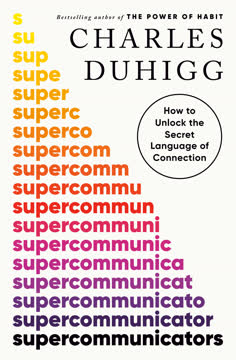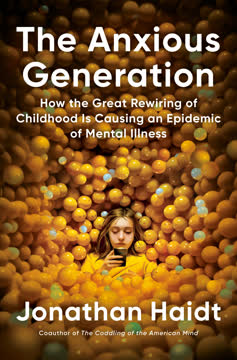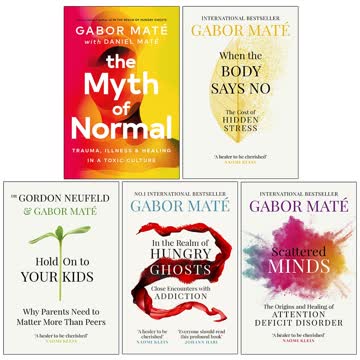نکات کلیدی
1. تروما سلامت، شخصیت و جامعه ما را شکل میدهد
تروما به معنای از دست دادن ارتباط با خود، خانواده و دنیای اطرافمان است.
تأثیر گسترده تروما. تروما تنها به رویدادهای فاجعهبار محدود نمیشود، بلکه شامل تروماهای کوچک روزمره مانند بیتوجهی عاطفی یا احساس نادیده گرفته شدن نیز میشود. این تجربیات به شکل عمیقی شخصیت، سلامت و جامعه ما را تحت تأثیر قرار میدهند:
- سلامت جسمی: تروما خطر ابتلا به بیماریهای مزمن مانند اختلالات خودایمنی و سرطان را افزایش میدهد
- سلامت روانی: میتواند منجر به اضطراب، افسردگی و اعتیاد شود
- روابط: تروما بر توانایی ما در ارتباط با دیگران و ایجاد پیوندهای سالم تأثیر میگذارد
- جامعه: تروماهای جمعی هنجارهای فرهنگی و سیستمهای سیاسی را شکل میدهند
با این حال، تأثیرات تروما سرنوشت نیستند. با درک این تأثیرات، میتوانیم به بهبود خود و ایجاد جوامع سالمتر بپردازیم.
2. ارتباط ذهن و بدن برای رفاه اساسی است
احساسات ما یک تجمل نیستند بلکه جنبهای اساسی از ساختار ما هستند.
تأثیر احساسات بر فیزیولوژی. ذهن و بدن به طور جداییناپذیری به هم مرتبط هستند و افکار و احساسات ما به طور مستقیم بر سلامت جسمی ما تأثیر میگذارند:
- هورمونهای استرس مانند کورتیزول بر عملکرد ایمنی، التهاب و پیری سلولی تأثیر میگذارند
- احساسات سرکوبشده میتوانند به صورت علائم جسمی یا بیماری ظاهر شوند
- حالات احساسی مثبت عملکرد ایمنی و سلامت کلی را تقویت میکنند
این ارتباط به دو صورت عمل میکند – تمرینات جسمی مانند ورزش و تکنیکهای تنفس نیز میتوانند به بهبود سلامت روانی و احساسی کمک کنند. شناخت این ارتباط برای سلامت و بهبود کلی ضروری است.
3. تجربیات اولیه به طور عمیقی بر سلامت مادامالعمر تأثیر میگذارند
معماری مغز از طریق یک فرآیند مداوم که قبل از تولد آغاز میشود، به بزرگسالی ادامه مییابد و پایهای محکم یا شکننده برای تمام سلامت، یادگیری و رفتارهای بعدی ایجاد میکند.
کودکی بزرگسالی را شکل میدهد. تجربیات اولیه ما، حتی در رحم، نقش مهمی در شکلگیری سلامت جسمی و روانی ما در طول زندگی ایفا میکنند:
- استرس پیش از تولد بر توسعه مغز و پاسخهای استرسی آینده تأثیر میگذارد
- روابط دلبستگی اولیه بر تنظیم عاطفی و الگوهای رابطهای تأثیر میگذارند
- تجربیات نامطلوب کودکی (ACEs) خطر ابتلا به مشکلات مختلف سلامتی در بزرگسالی را افزایش میدهند
عوامل کلیدی برای توسعه سالم:
- مراقبتهای مداوم و هماهنگ
- امنیت و حمایت عاطفی
- فرصتهایی برای بازی و کاوش
درک این تأثیرات توسعهای اهمیت حمایت از خانوادهها و ایجاد محیطهای پرورشدهنده برای کودکان را برجسته میکند.
4. اعتیاد پاسخی به نیازها و دردهای برآورده نشده است
نپرسید چرا اعتیاد، بلکه بپرسید چرا درد.
اعتیاد به عنوان مقابله. به جای یک نقص اخلاقی یا بیماری صرفاً بیولوژیکی، اعتیاد بهتر است به عنوان تلاشی برای تسکین درد و برآورده کردن نیازهای برآورده نشده درک شود:
- ریشهها اغلب در تروما یا سختیهای کودکی نهفتهاند
- رفتارهای اعتیادی تسکین موقت یا فرار از درد عاطفی را فراهم میکنند
- رفتار یا ماده به جایگزینی برای ارتباط و رضایت واقعی تبدیل میشود
این دیدگاه تمرکز را از سرزنش به همدلی تغییر میدهد و بر رسیدگی به علل ریشهای در درمان تأکید میکند. رویکردهای مؤثر شامل:
- بهبود تروما
- ساخت مهارتهای مقابلهای سالم
- رسیدگی به نیازهای عاطفی زیرین
- ایجاد محیطهای اجتماعی حمایتی
5. بیماری روانی بازتابی از تجربیات زندگی است، نه فقط زیستشناسی
تروما زمانی است که ما دیده و شناخته نمیشویم.
زمینه مهم است. در حالی که عوامل بیولوژیکی نقش دارند، مسائل سلامت روانی عمدتاً توسط تجربیات زندگی و زمینههای اجتماعی شکل میگیرند:
- تروماهای کودکی خطر ابتلا به مشکلات مختلف سلامت روانی را افزایش میدهند
- استرسهای اجتماعی مانند فقر و تبعیض بر سلامت روانی تأثیر میگذارند
- تشخیصها اغلب بازتابی از مکانیزمهای مقابلهای هستند تا "اختلالات" ذاتی
این درک خواستار رویکردی جامعتر به سلامت روانی است:
- رسیدگی به علل ریشهای و شرایط زندگی
- دیدن علائم به عنوان پاسخهای معنادار به تجربیات
- تأکید بر بهبود و رشد به جای مدیریت صرف علائم
6. عوامل اجتماعی مانند نژادپرستی و نابرابری بر سلامت تأثیر میگذارند
نژادپرستی، نه خود نژاد، زندگی زنان و نوزادان آفریقایی-آمریکایی را تهدید میکند.
عوامل اجتماعی تعیینکننده سلامت. عواملی مانند نژادپرستی، فقر و نابرابری اجتماعی تأثیرات عمیقی بر سلامت جسمی و روانی دارند:
- استرس مزمن ناشی از تبعیض بر سیستمهای مختلف بدن تأثیر میگذارد
- دسترسی محدود به منابع و مراقبتهای بهداشتی نابرابریهای سلامت را تشدید میکند
- تروماهای بیننسلی نتایج سلامت جامعه را شکل میدهند
رسیدگی به این مسائل نیازمند:
- شناخت نابرابریهای سیستماتیک
- اجرای سیاستهایی برای کاهش نابرابریها
- ایجاد جوامع عادلانهتر و فراگیرتر
بهبود فردی با بهبود اجتماعی در هم تنیده است – ما باید به هر دو تروماهای شخصی و جمعی رسیدگی کنیم.
7. بهبود شامل بازگشت به خود واقعی ما است
بهبود تضمینشده نیست، اما در دسترس است.
بازپسگیری تمامیت. بهبود سفری است برای بازگشت به خود واقعی و ظرفیتهای ذاتی ما برای رشد و رفاه:
جنبههای کلیدی فرآیند بهبود:
- شناخت و احساس احساسات سرکوبشده
- به چالش کشیدن باورها و روایتهای محدودکننده
- پرورش همدلی و پذیرش خود
- بازگشت به بدن و حکمت آن
- ساخت روابط و جامعه اصیل
این فرآیند اغلب شامل "رنج به سوی حقیقت" است – مواجهه با واقعیتهای دردناک برای رهایی از چنگ آنها. در حالی که چالشبرانگیز است، این سفر به اصالت، حیات و ارتباط بیشتر منجر میشود.
8. همدلی کلید بهبود شخصی و اجتماعی است
این همدلی است که ما را از بیحسی به سوی بهبود حرکت میدهد.
قدرت همدلی. پرورش همدلی – برای خود، دیگران و جامعه به طور کلی – برای بهبود در همه سطوح ضروری است:
پنج سطح همدلی:
- همدلی انسانی عادی: تحت تأثیر قرار گرفتن از رنج
- کنجکاوی و درک: تلاش برای درک علل ریشهای
- شناخت: دیدن انسانیت مشترک ما
- همدلی شدید: اقدام برای رسیدگی به بیعدالتی
- همدلی خردمندانه: تعادل همدلی با مرزها
تمرین همدلی نه تنها از بهبود فردی حمایت میکند بلکه اثرات موجی ایجاد میکند، جوامع و جوامع متصلتر و دلسوزتر را پرورش میدهد.
آخرین بهروزرسانی::
FAQ
What's The Myth of Normal about?
- Exploration of Health and Culture: Gabor Maté examines the deep connections between emotional well-being, social connectivity, and health. He argues that chronic illnesses reflect broader cultural and societal issues rather than just individual afflictions.
- Trauma and Its Impact: The book defines trauma as an "inner injury" affecting behavior and health, emphasizing its pervasive influence on mental and physical well-being in our culture.
- Holistic Approach to Healing: Maté advocates for understanding health through emotional, psychological, and social factors, suggesting that true healing requires addressing these interconnected aspects.
Why should I read The Myth of Normal?
- Insightful Perspective on Illness: The book challenges conventional views by integrating mental and physical health, encouraging readers to consider societal contributions to personal health issues.
- Empowerment Through Understanding: Understanding trauma's roots and effects can provide insights into personal and others' experiences, empowering individuals to seek healing and healthier relationships.
- Cultural Critique: Maté critiques modern health and wellness approaches, urging readers to question societal norms that may harm well-being and inspire change in their lives and communities.
What are the key takeaways of The Myth of Normal?
- Interconnectedness of Health: Health is influenced by social, emotional, and cultural contexts, not just individual concerns. Chronic illness is often a feature of societal structures.
- Role of Trauma: Trauma is a foundational aspect of many health issues, often avoided or misunderstood, and understanding it can lead to better health outcomes.
- Cultural Change for Healing: A shift in viewing health and illness is needed, advocating for a compassionate and holistic approach to health-related issues.
How does Gabor Maté define trauma in The Myth of Normal?
- Trauma as Inner Injury: Defined as a lasting rupture within the self due to difficult events, trauma is more about its impact than the events themselves.
- Pervasiveness of Trauma: Trauma is common and influences personal functioning and social relationships, encouraging reflection on personal and others' experiences.
- Impact on Health: Unresolved trauma can lead to chronic stress and illness, making it a significant contributor to various health issues throughout life.
How does The Myth of Normal address the concept of addiction?
- Addiction as a Response to Trauma: Addiction is framed as a coping mechanism for unresolved trauma, shifting the focus from moral failing to symptom.
- Cultural Factors in Addiction: Societal factors, such as materialism and isolation, significantly contribute to addiction, encouraging a broader understanding beyond individual choices.
- Pathways to Healing: Addressing underlying trauma is crucial for healing from addiction, with healing being possible when confronting root causes of suffering.
What is the relationship between stress and health in The Myth of Normal?
- Stress as a Health Hazard: Chronic stress leads to various health problems, highlighting the need to address stress in health discussions.
- Biopsychosocial Model: Health is influenced by relationships, social circumstances, history, and culture, encouraging a comprehensive understanding of health.
- Emotional Regulation: Stress affects emotional regulation, impacting physical health, with intergenerational effects seen in stressed adults and children.
What healing principles does Maté propose in The Myth of Normal?
- Authenticity: Emphasizes being true to oneself as a healing principle, leading to greater well-being and fulfillment.
- Agency: Encourages taking responsibility for one's life and choices, fostering empowerment and personal growth.
- Compassion: Highlights the role of compassion for oneself and others as essential for healing, facilitating deeper connections and promoting healing.
How does Maté suggest we reconnect with our authentic selves?
- Self-Reflection and Inquiry: Encourages asking questions like "What am I feeling?" to uncover true feelings and desires, fostering authenticity.
- Embracing Vulnerability: Emphasizes the importance of feeling and expressing emotions to reconnect with one's true self.
- Community and Connection: Supportive relationships are crucial for fostering authenticity, helping individuals feel safe to express their true selves.
How does The Myth of Normal critique modern parenting practices?
- Parenting in Isolation: Critiques isolated parenting as stressed parenting, highlighting the need for community support in raising children.
- Impact of Stress on Parenting: Parental stress negatively affects children's development, emphasizing the importance of addressing parental well-being.
- Cultural Expectations: Societal expectations often lead to a disconnect from instinctual knowledge, undermining parenting instincts.
What is Compassionate Inquiry as described in The Myth of Normal?
- Self-Reflection Method: A therapeutic approach focusing on self-exploration and understanding, encouraging open-ended questions about feelings and beliefs.
- Humility and Curiosity: Emphasizes approaching oneself with humility and curiosity for genuine exploration of one's inner world.
- Healing Through Connection: Aims to reconnect individuals with their authentic selves, addressing root causes of suffering for healing.
How does The Myth of Normal address the intersection of race, class, and health?
- Racial Disparities in Health: Discusses how systemic racism contributes to health disparities, leading to poorer outcomes for marginalized communities.
- Class and Economic Inequality: Highlights how economic status affects health, with lower-income individuals facing greater challenges.
- Intersectionality: Advocates for an intersectional approach to health, considering race, class, and gender dynamics to address health disparities effectively.
What are the best quotes from The Myth of Normal and what do they mean?
- "The entire social construct... is deeply flawed.": Critiques modern society, suggesting health issues stem from systemic problems rather than individual failings.
- "Health and illness are not random states...": Highlights that health is influenced by emotional and social environments, not purely biological.
- "Healing is not guaranteed, but it is available.": Offers hope that healing is possible through understanding and addressing root causes of suffering.
نقد و بررسی
کتاب افسانهی نرمال نقدهای متفاوتی دریافت کرده است. بسیاری از رویکرد جامع ماتِه به سلامت، که تروما، جامعه و بیماری را به هم متصل میکند، تمجید میکنند. خوانندگان نقد او بر پزشکی غربی و سرمایهداری را میپسندند. با این حال، برخی کتاب را بیش از حد طولانی، تکراری و فاقد دقت علمی میدانند. منتقدان معتقدند ماتِه مسائل پیچیده را بیش از حد سادهسازی کرده و بیش از حد به حکایات تکیه میکند. بررسی کتاب از تروماهای دوران کودکی و اثرات طولانیمدت آن با بسیاری همصدا میشود، در حالی که دیگران احساس میکنند که این کتاب بیش از حد والدین را مقصر میداند. به طور کلی، خوانندگان کتاب را اندیشهبرانگیز اما دوقطبی مییابند.
Similar Books


















